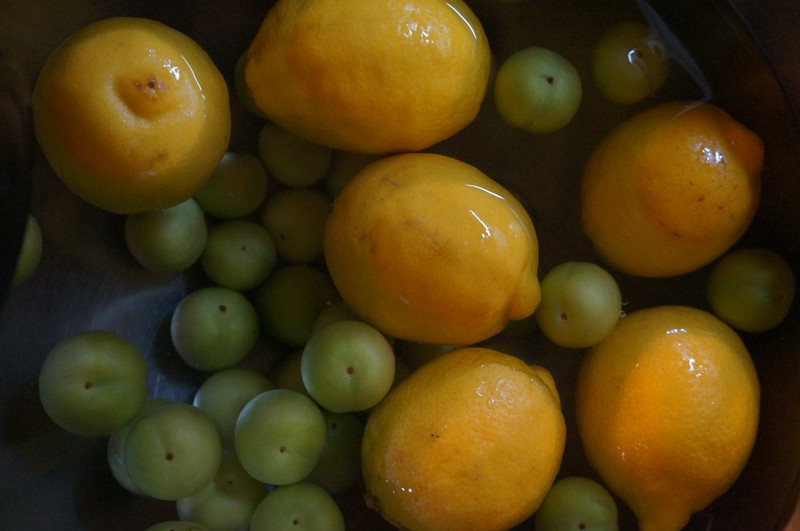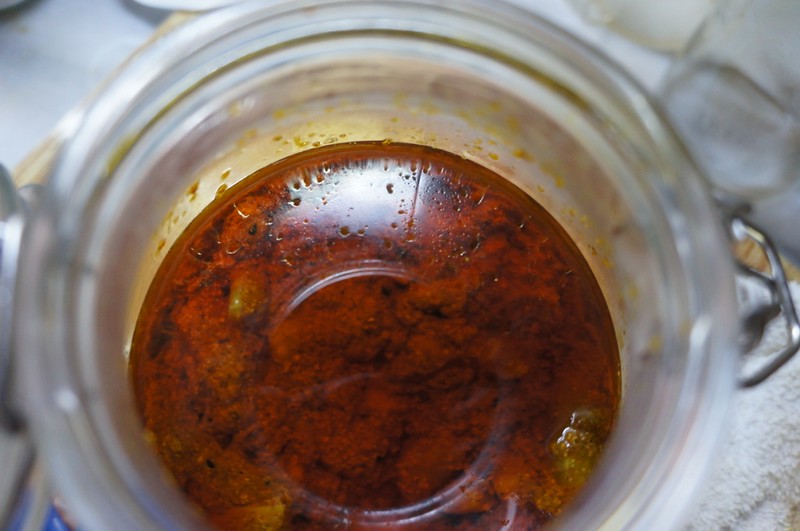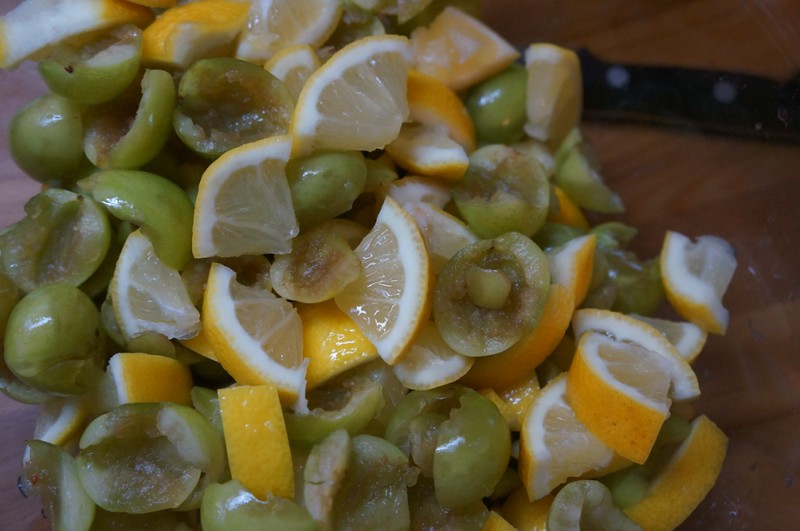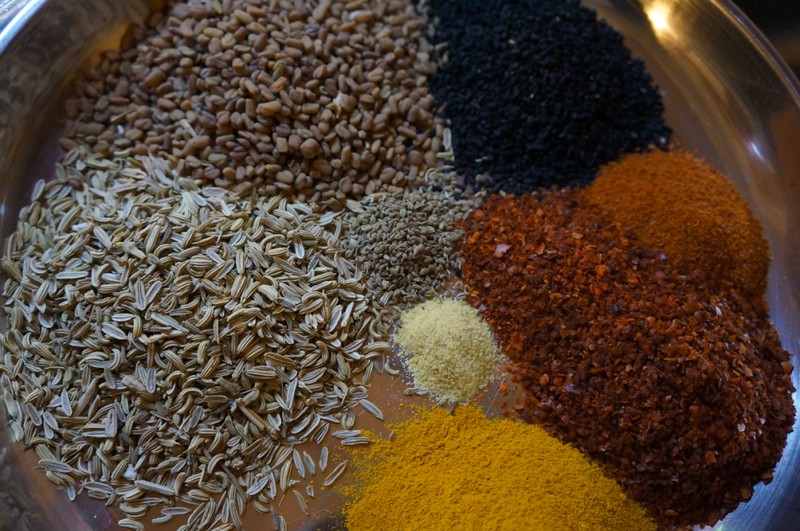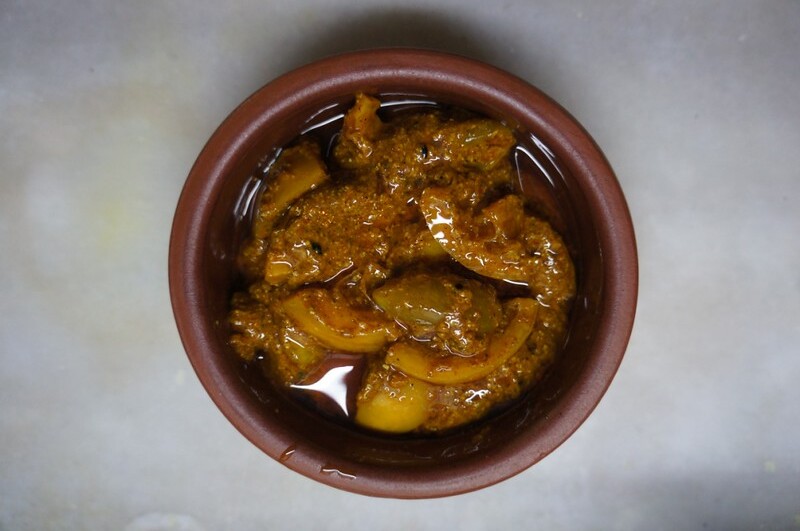I have become a fan of good bacteria, so much so that the kitchen has become a bit of laboratory – sourdough starters and other flour or grain soaking overnight, water kefir and kombucha bubbling away in their respective corners, and salt stimulating the enzymes of various vegetables – kimchi, horseradish, cucumber pickles – and even fish – sardines and anchovies (we’ll see how those turn out; currently curing in the fridge).
And Indian achar.
Hot and sour pickles, the kind that make your mouth water just thinking about them. I have found mango chutney here in Istanbul, but no pickles, and in any case I am always disappointed by the export brands, which are heavy on the preservatives. They are hard to carry from country to country, since most of the time they come in glass jars. So I decided to make my own. I used to be intimidated by the idea, first because I thought you had to have super hot conditions and I was living in the San Francisco Bay Area at the time I first considered it. And then it seemed shrouded in so much mystery; I remember being scolded in a Calcutta household for having left the spoon in the jar – metal was absolutely forbidden because it would spoil the pickle, which seemed not only a waste but somehow nearly sacrilegious. I think that’s probably true in the conditions that prevailed – hot humid weather and little refrigeration. While I still follow the no metal rule (and anyway I am not so careless as to leave spoons in containers anymore…), I have lost my fear of the mysterious and generally just forge ahead; what is there to lose, after all?
This achar is a Turkish Indian fusion. Since I can’t get unripe mangoes, i used a local sour green plum, called erik, and combined it with lemons (you can find limes but they are harder to come by and much harder skinned than the variety available in India). nearly all spices are easy to obtain in Istanbul – the spice bazaar has been here since the 1600s after all.
I used this fun recipe (scaled down) from Bindya Singh as a basis, but I included some mustard seed, and lightly toasted and ground all the spices first, rather than leaving them whole, as I like eating the spice paste as much as as the pickled fruit. I did not have a clay jar, so I used a flip top glass jar. While sun is good, it is not absolutely necessary; the salt does a lot of the work. And I keep the pickle in the refrigerator anyway. This recipe makes a lot, so you can give some away.
Although you can find mustard oil here, it is usually sold in tiny quantities in the spice bazaar (as a medicinal or herbal oil) and getting a liter entails a negotiation and no guarantee of freshness since the request is so unusual. So I did bring some back with me from one of the Indian groceries in Berkeley. A few years back there was a lot of drama about erucic acid and the bottles started carrying a warning – for external use only, but the oil is edible – Bengalis and others have long used it as a cooking medium. The recipe can of course be made with regular vegetable oil, but will lack the pungency of the mustard oil.
Lemon and green plum pickle
1 lb sour plums, pitted and cut in half or green (unripe) mangos, if you can get them, cut into pieces
1 lb lemons (organic if you can get them), cut into quarters and quarters sliced
4 oz fenugreek seeds
2 oz aniseed or fennel
1 oz kalonji – nigella sativa or black seed, also known as onion seeds
1 oz mustard seed
2 Tbsp Turmeric powder
8 oz salt – I used kosher
2 cups mustard or other vegetable oil
½ cup red chilli powder or according to taste – I used a mix of cayenne pepper and coarsely ground pul biber, or Aleppo pepper, which is a Turkish hot pepper
½ tsp asafoetida(for smoking the jar)
Wash the fruit well and dry it before pitting and cutting it up. Place the cut pieces in a large bowl. Toast the whole spices very lightly in a dry pan, for about a minute or two (until an aroma starts to arise), then grind in a spice grinder. If you don’t have a spice grinder, you can use powdered spices or you can leave them whole.
Add the ground spices, turmeric, chili pepper and salt to the fruit. Mix well with a wooden spoon.
Heat a dry frying pan. Have the clean and dry jar ready. Put the asafetida into the center of the frying pan and hold the jar over it as the spice begins to brown and smoke. I don’t believe this step is necessary but it adds a nice touch.
Pack the spice and fruit mix into the jar. Cover with a coffee filter or cheesecloth (to keep bugs out) and attach with a rubber band or string. Place in the sun if possible or in a warm place in the kitchen. If you put it in the sun, don’t forget to bring it inside in the evening. Do this for three or four days.
On the last day, heat the mustard oil till it shimmers and just begins to smoke, then remove from heat and cool. Pour half into the jar, mix well with a wooden spoon (avoid metal) and then cover the fruit with the remaining oil. Leave out in the kitchen, well covered, for another week, then refrigerate. Will keep for a very long time.

